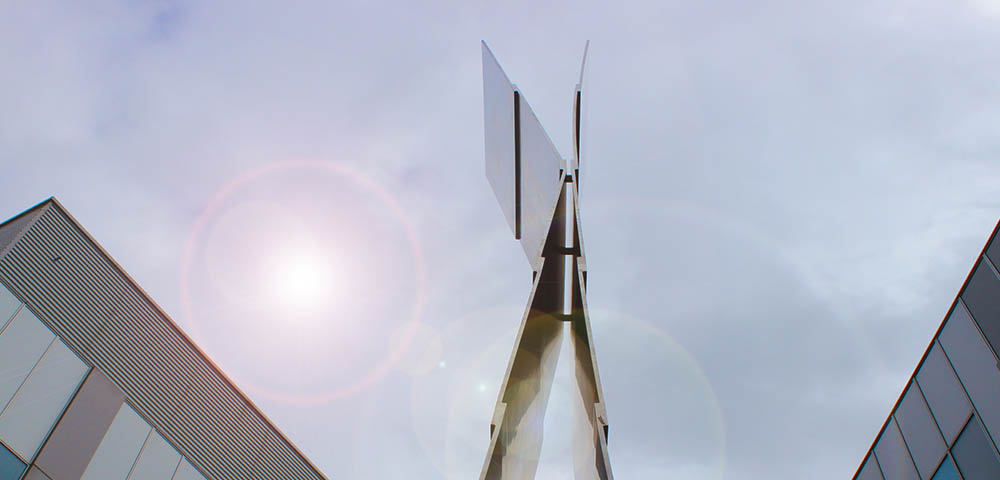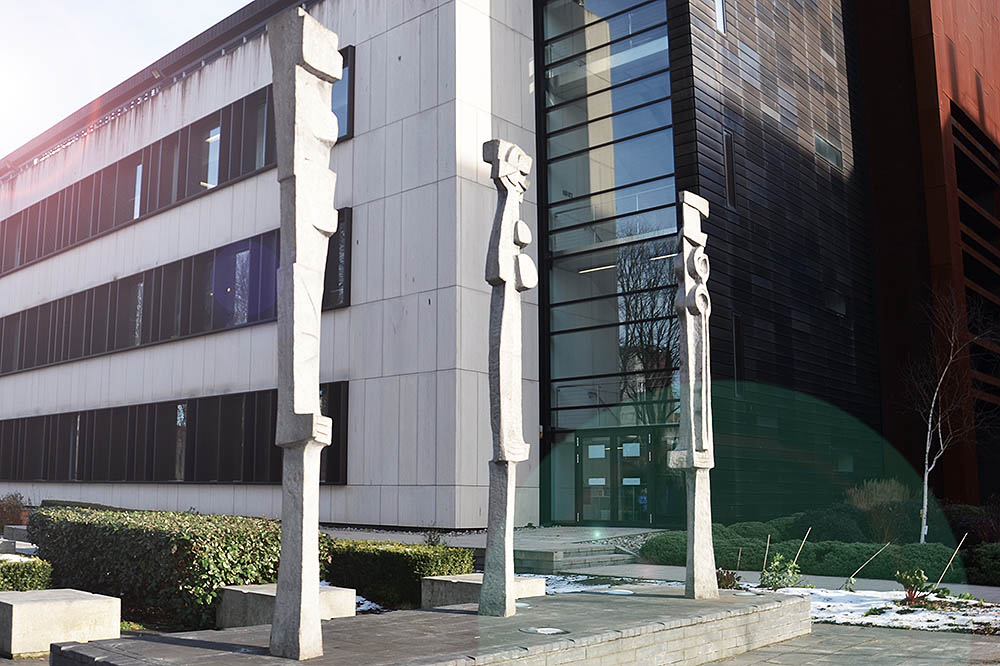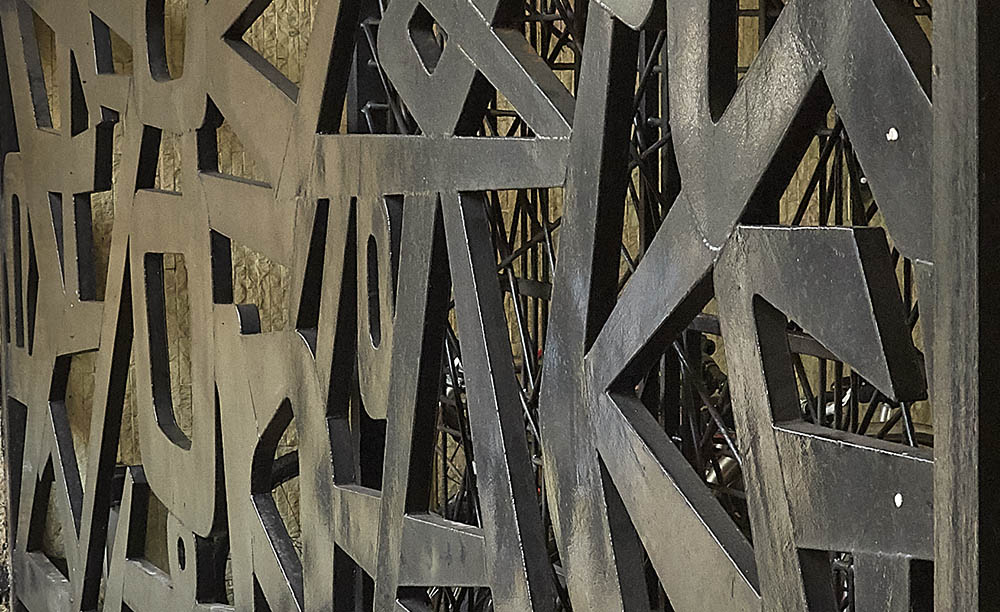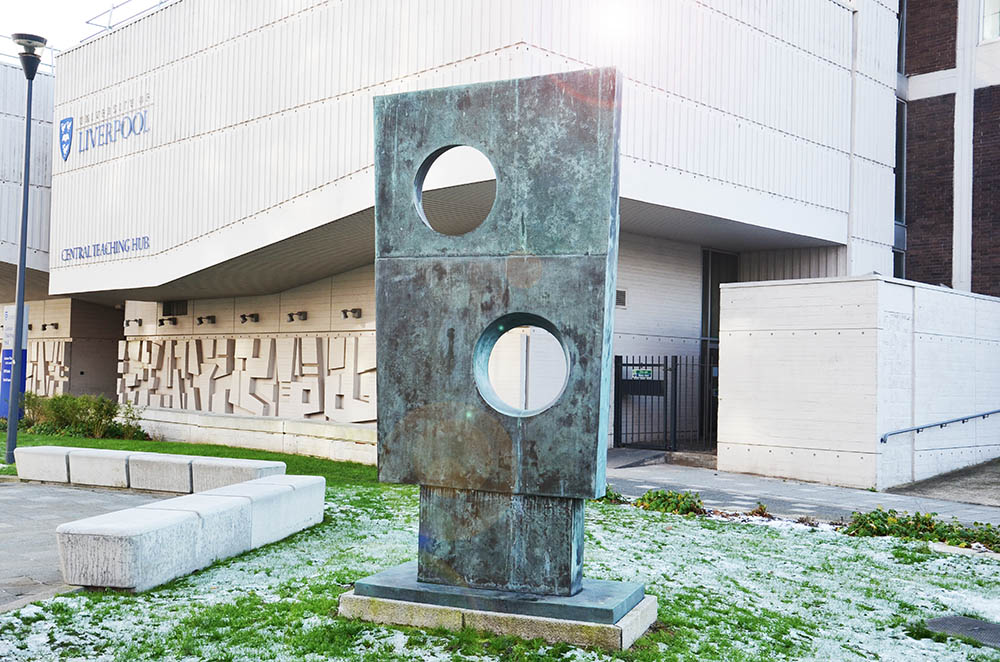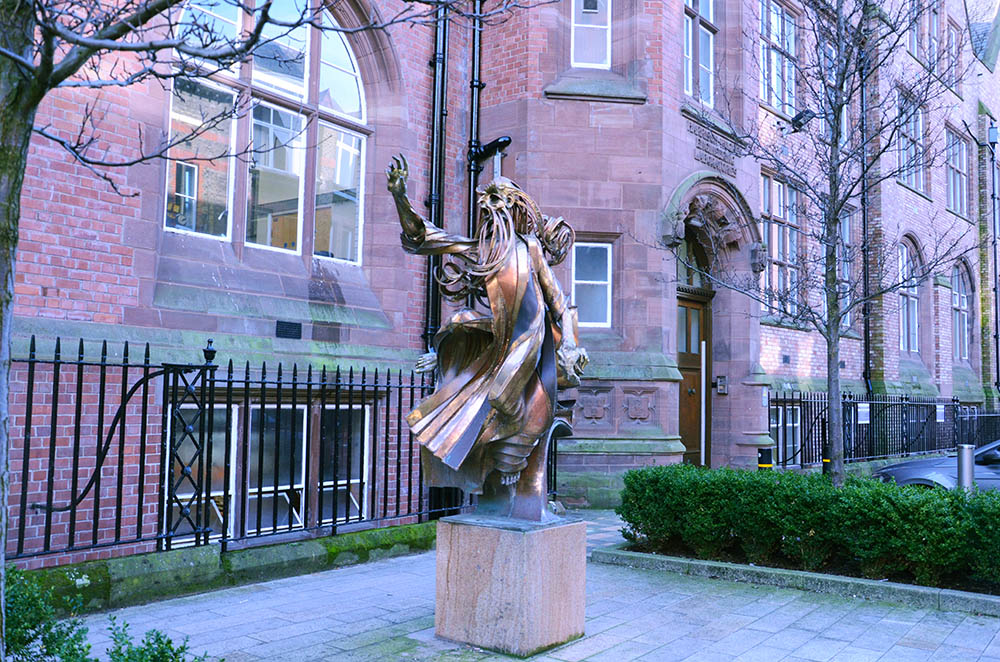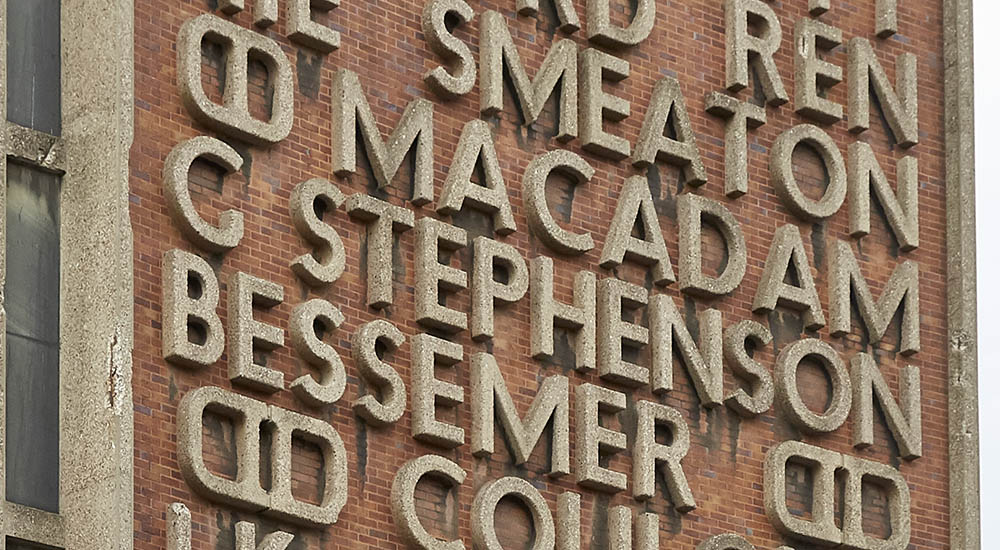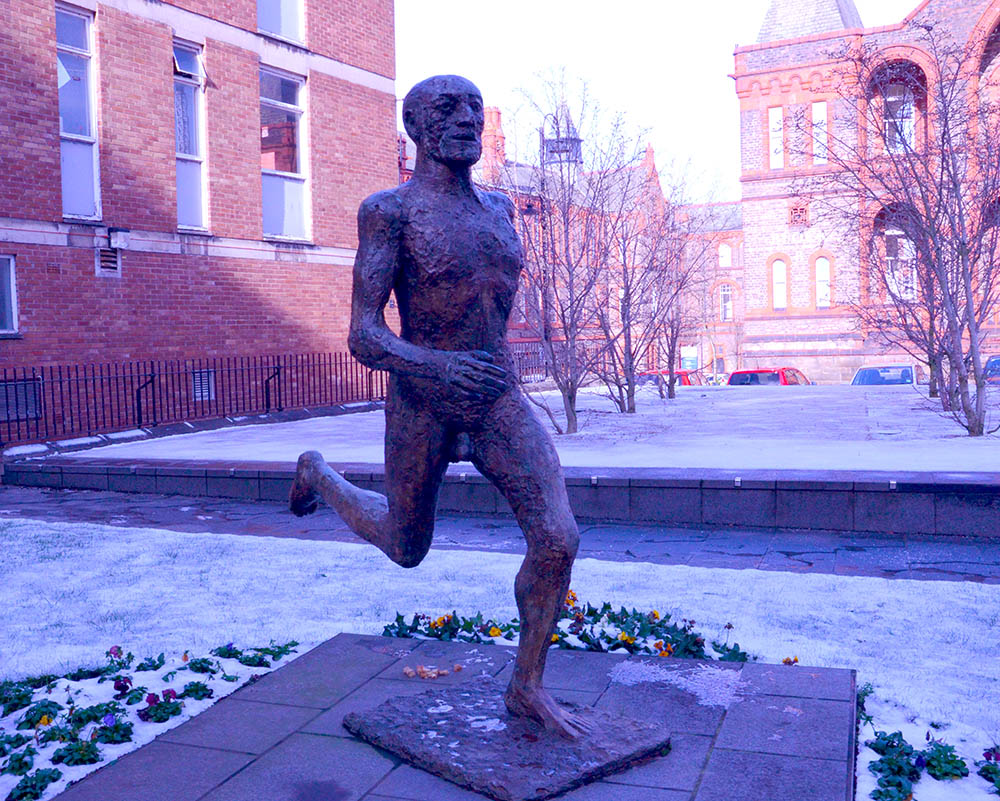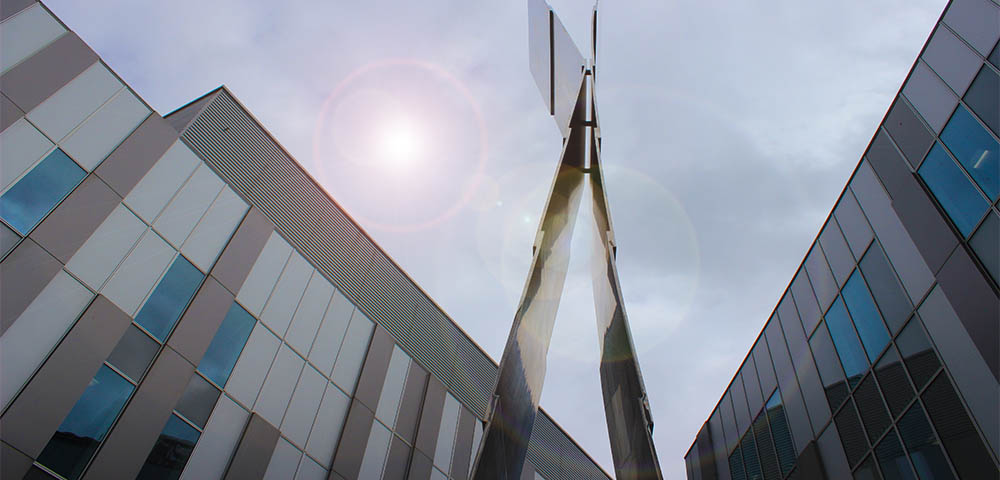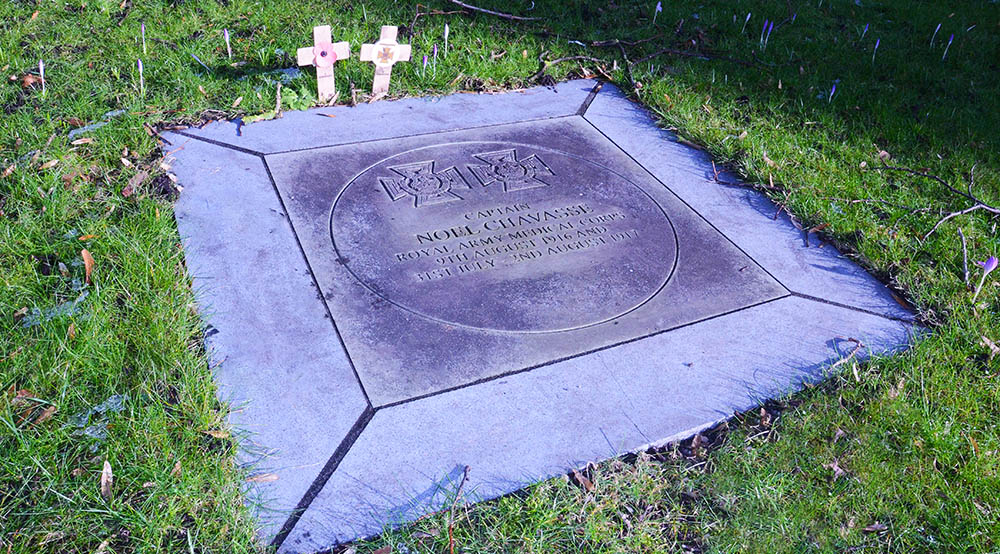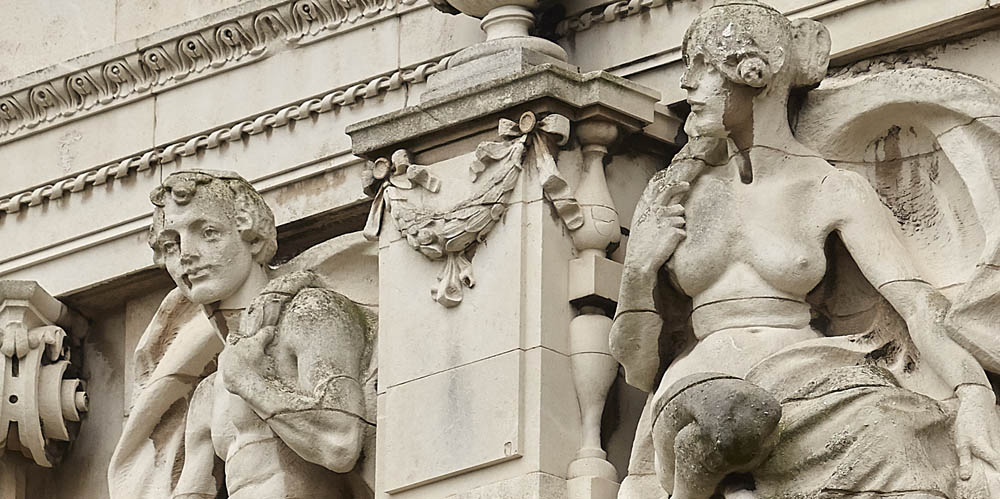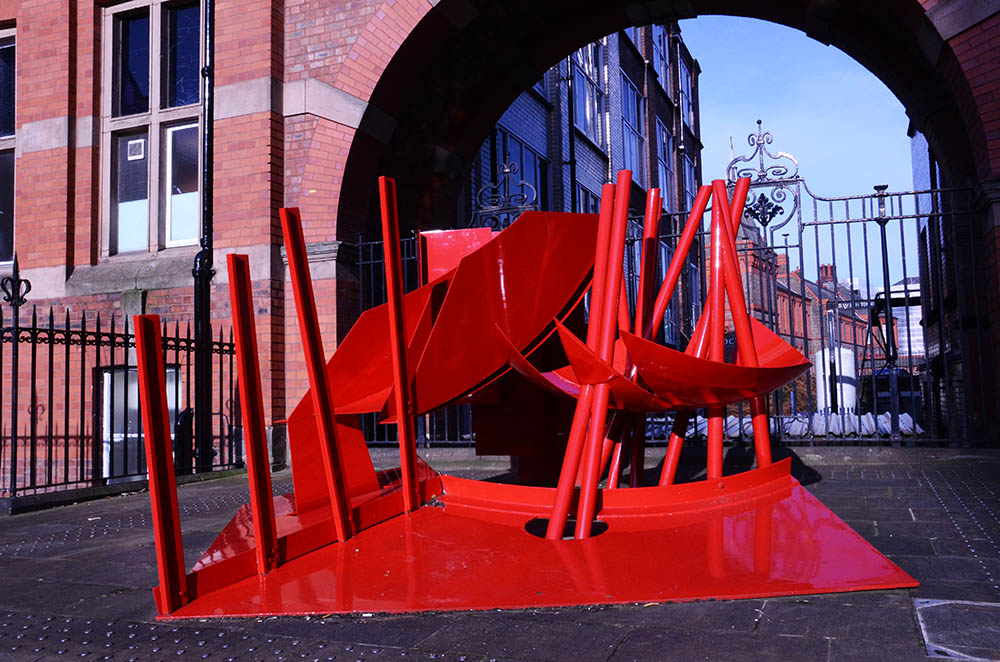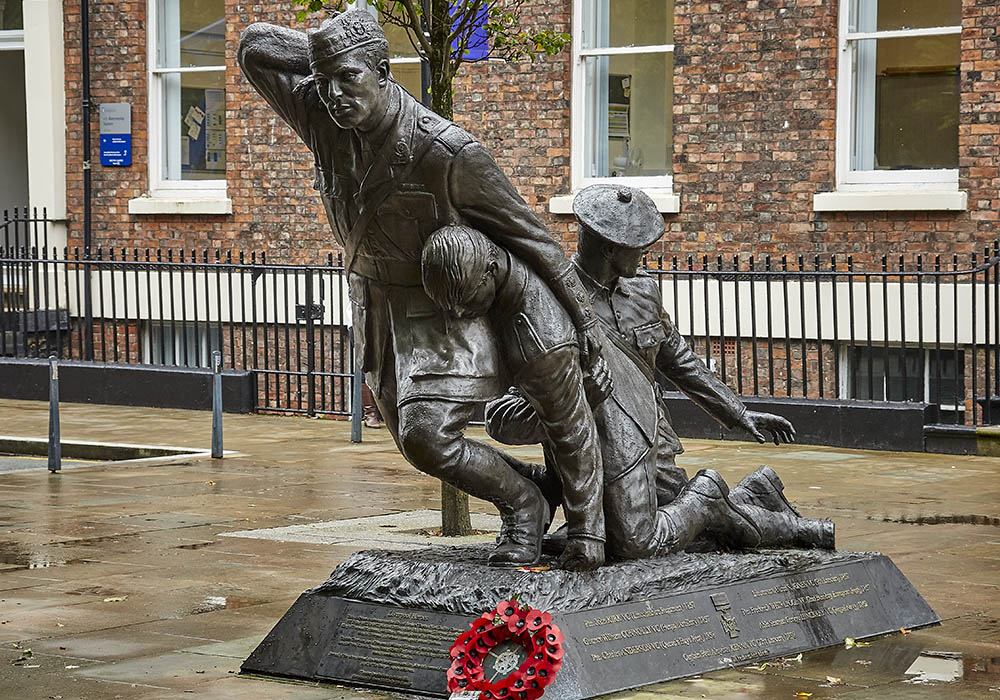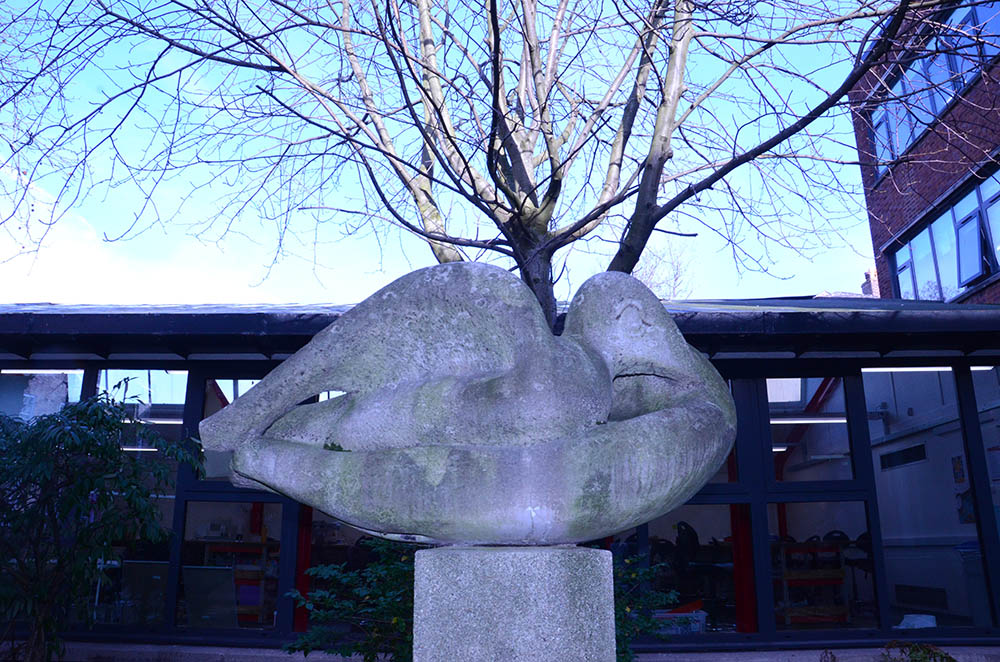Go on a trail across University of Liverpool’s campus to discover a wide range of sculpture from the University’s art and heritage collection. Download our 'Sculpture Trail' app on your Apple or Android devices.
From the abstract to the more tradition, the University of Liverpool's campus is home to an amzing collection of art. Find out more about some of our favourite pieces.
Back to: Museums and Collections
